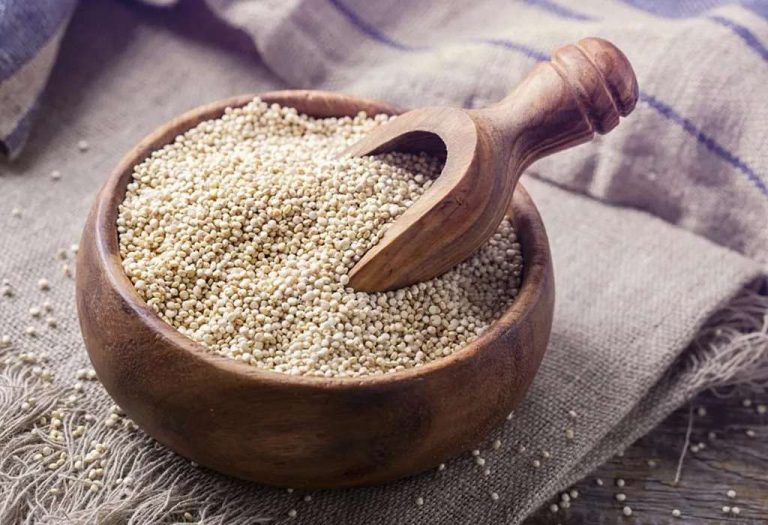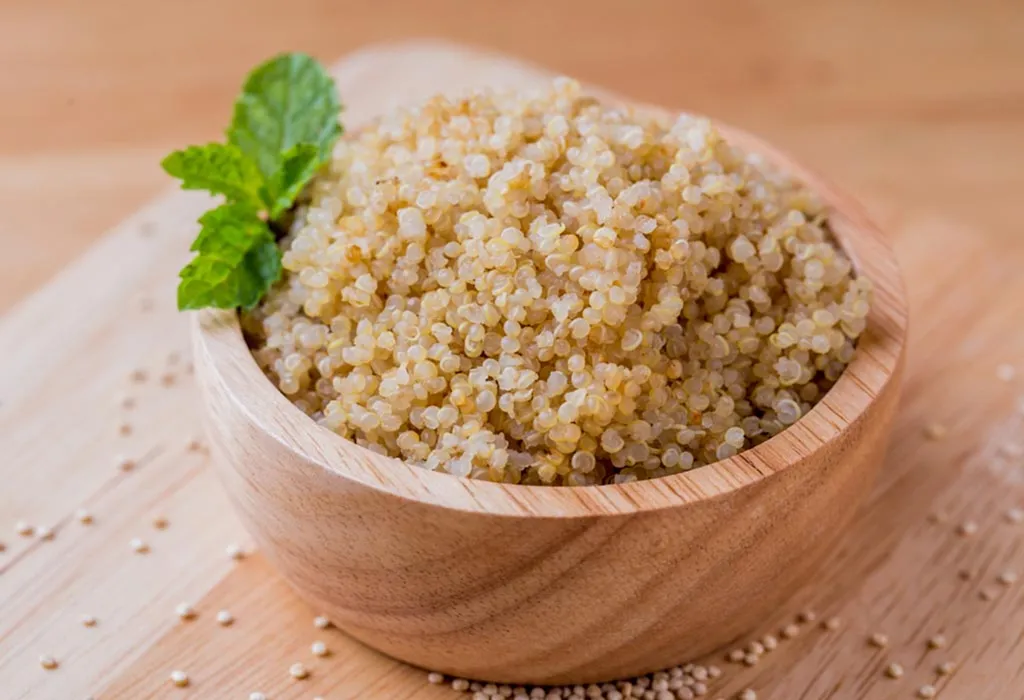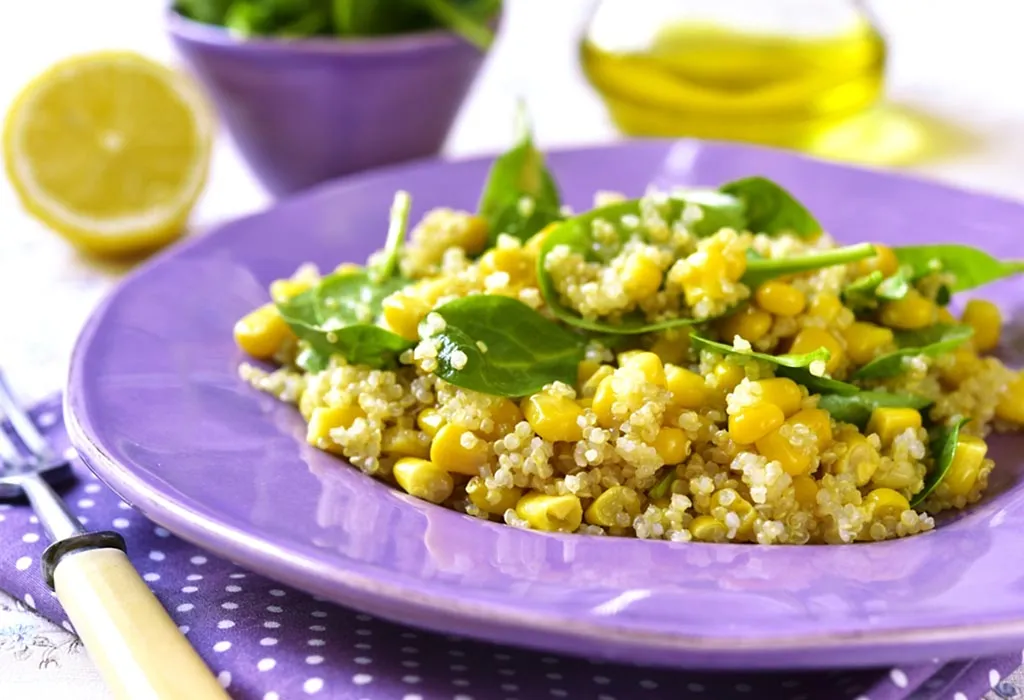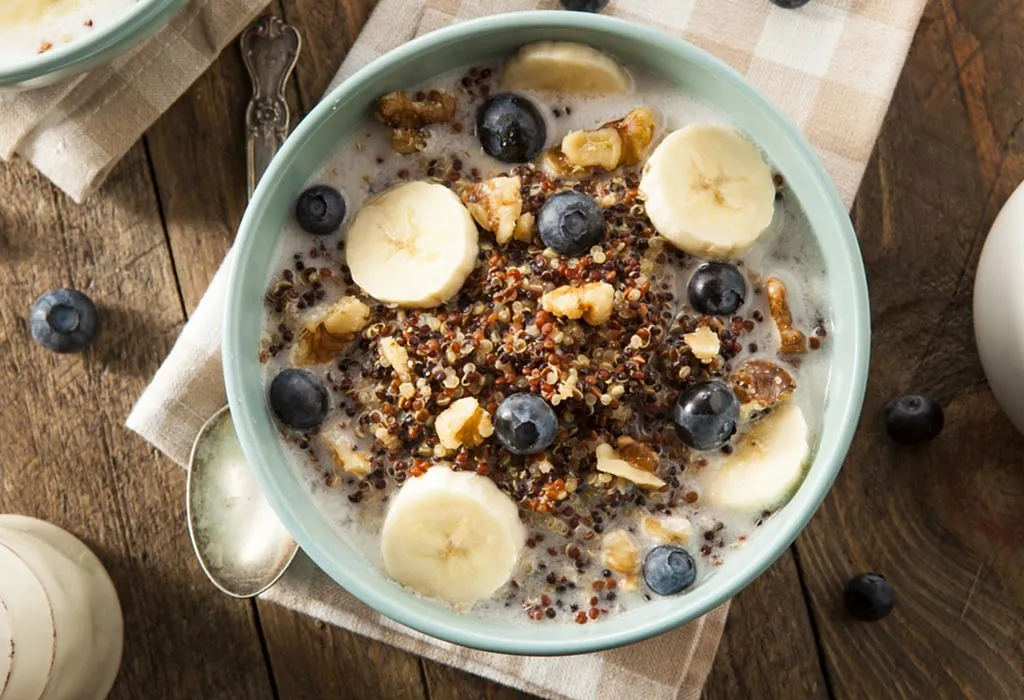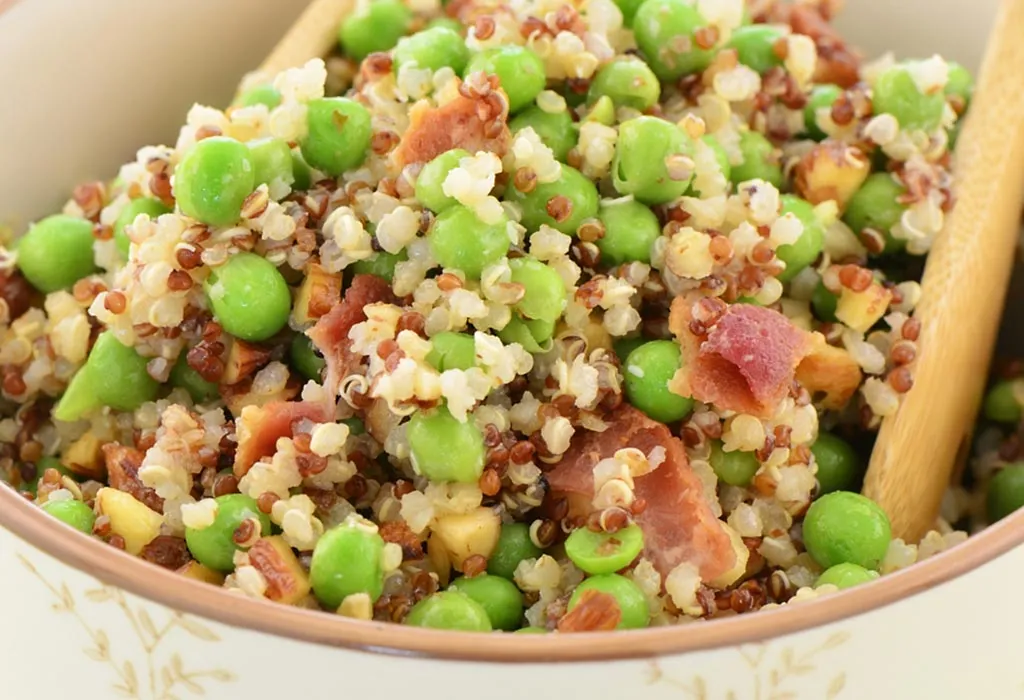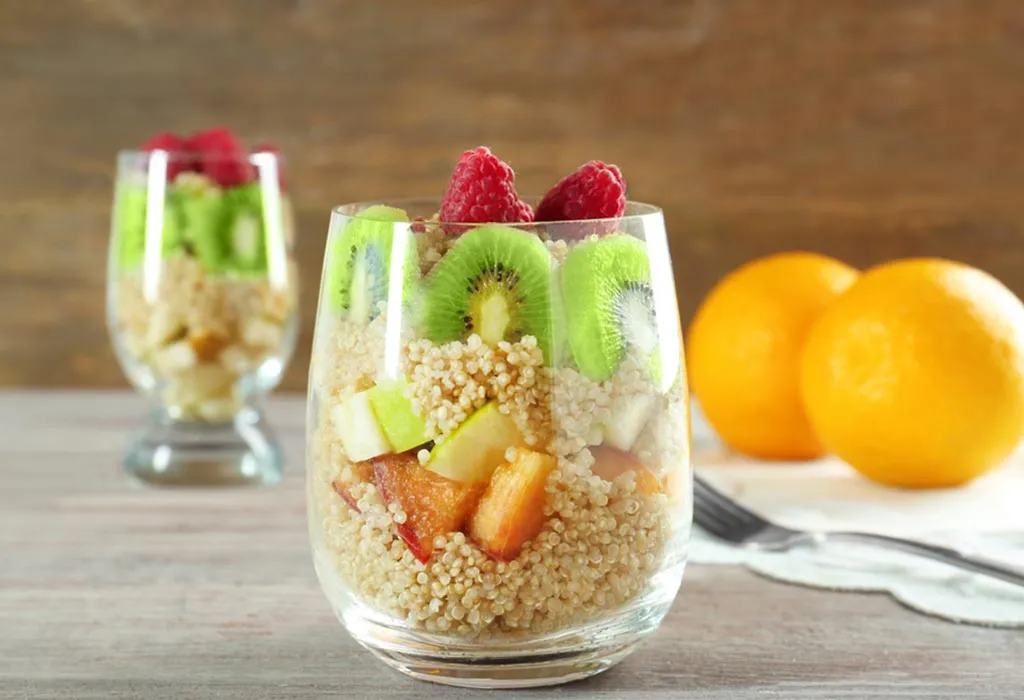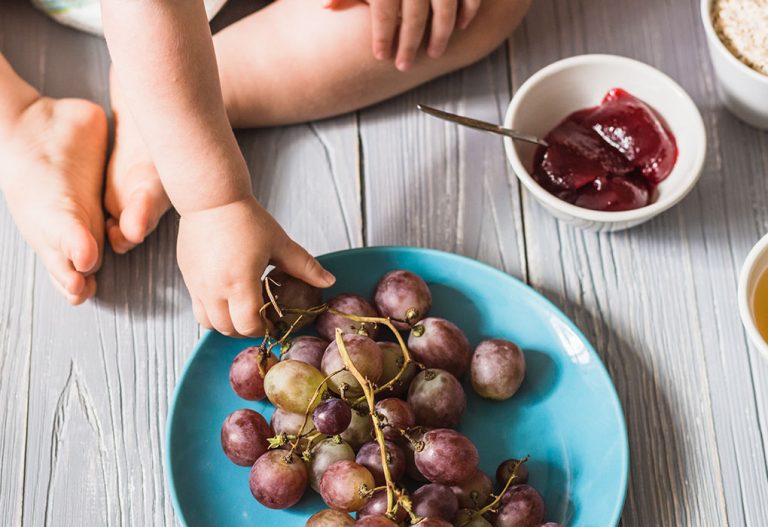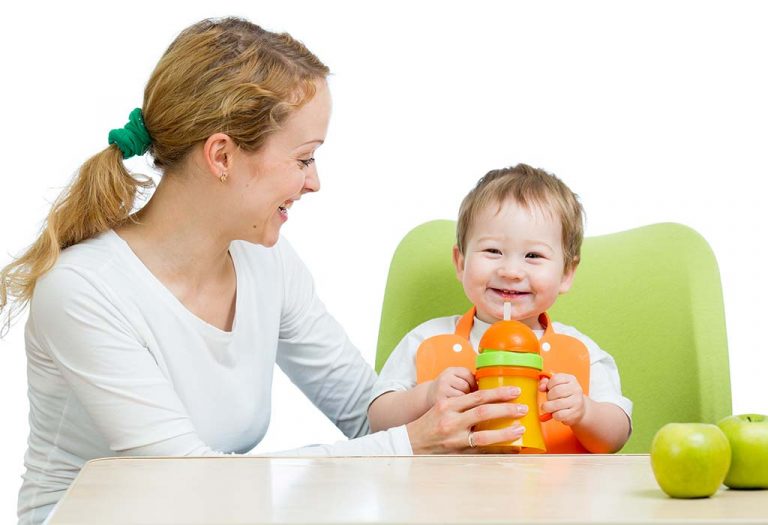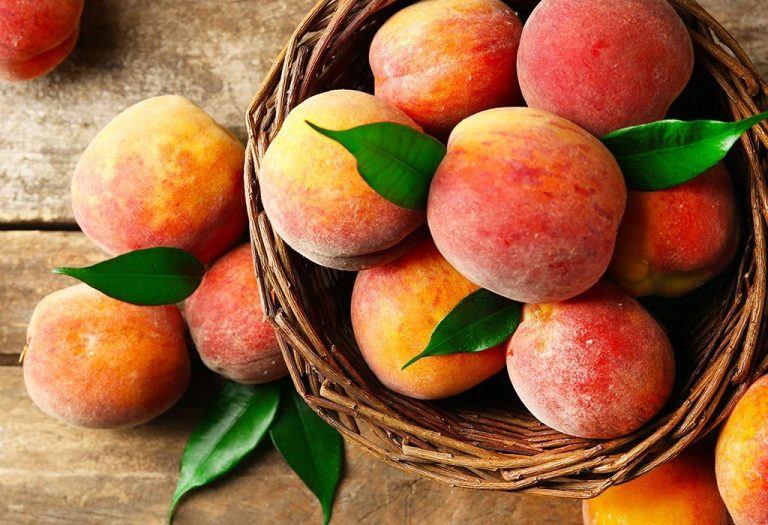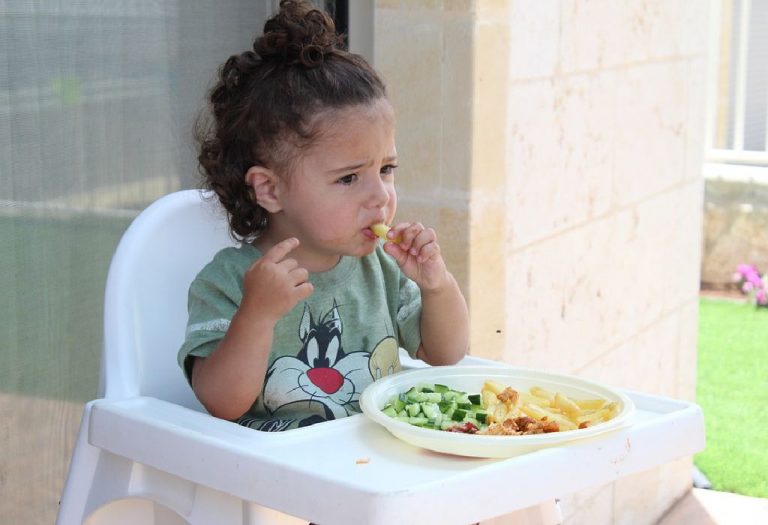Quinoa for Babies – Health Benefits and Recipes

Ensuring your baby’s health is important from the start. Breast milk is essential for the initial six months, gradually transitioning to purees and easily digestible foods. Quinoa, pronounced “keen-wah”, emerges as a nutrient-rich choice for young ones. Hailing from South America, it held a revered status among the Incas for its health-enhancing properties. Despite being mistaken for a grain, quinoa is, in fact, a seed. Explore this superfood and discover when is the right time to introduce quinoa to your little one. With its rich nutritional profile, quinoa for baby offers a promising addition to your little one’s diet as they embark on their journey of growth and development.
Can Babies Eat Quinoa?
Yes, babies can eat quinoa. Quinoa is a highly nutritious food that can be introduced to babies around 6 to 8 months of age, after they have started eating other solid foods. It’s important to cook quinoa until it’s soft and easily mashable to avoid any choking hazards. Quinoa is a great source of protein, fiber, and essential nutrients, making it a beneficial addition to a baby’s diet as they continue to grow and develop.
When Can You Introduce Quinoa to Your Baby?
In most cases, doctors recommend quinoa to babies 8 months old and above. However, some parents feed it to their babies way before they are 8 months old. Consulting your healthcare provider to know when your baby is ready for quinoa is highly recommended. When its time to introduce this superfood, make sure you feed a small dose for your little one’s body to get used to this new food item.
Nutritional Value of Quinoa
Quinoa is a superfood which can be given to babies in many different ways. It is a nutritionally packed food that is high in protein, vitamins, and minerals. Quinoa also has antioxidants and a good amount of fibre content, which is a natural laxative to avoid constipation in babies , too. The many nutrients that are found in 100 grams of cooked quinoa are as follows:
| Nutrient | Amount |
| Calories | 120 |
| Water | 72 % |
| Protein | 4.4 g |
| Carbs | 21.3 g |
| Sugar | 0.9 g |
| Fibre | 2.8 g |
| Fat | 1.9 g |
| Saturated | 0.23 g |
Source: https://www.healthline.com/nutrition/foods/quinoa#section1
This superfood for babies gives them everything required for their perfect growth. It has many amazing benefits and is considered to be wholesome food for little ones.
Amazing Health Benefits of Quinoa for Babies
Here’s what your baby will gain from quinoa if it is made a regular part of his diet.
1. Antioxidants
Quinoa has high levels of antioxidants, which is a requirement in the human body (1).
2. Less Cholesterol and High Protein
Dietitians recommend quinoa for babies because it has very less cholesterol, unlike other protein-rich foods.
3. High Fibre level
Mothers recommend quinoa because it is easy to digest, and it helps reduce bloating, constipation etc. as the dietary fibre in it helps in bowel movements (2).
4. High Protein
The high level of protein helps in muscle growth and building immunity.
5. Amino Acid
The amino acid levels in quinoa help with hair growth and tissue repair and also provide strength to the baby.
6. Riboflavin
Quinoa helps in building connectivity in the tissue, which helps rejuvenate your little one’s skin.
Precautions to Take While Giving Quinoa to Your Young Child
It’s important to take precautions while giving quinoa in baby-led weaning to your little one.
- It is important that the quinoa you use is dehulled. Most of the packets that you buy must have dehulled quinoa. However, there are times you need to be careful because if the quinoa is not dehulled, it can’t be edible.
- The hull in quinoa has saponins which makes it quite bitter. Once you buy quinoa, wash it under running water and soak it before you use it for your baby food. A proper wash will help get rid of all the bitterness.
- Do not use salt when you are preparing quinoa for your baby. Doctors say that it is not a requirement for your little one.
- Quinoa for baby allergies is something you need to watch out for. Like other seeds, quinoa can also cause allergic reactions in some babies.
How to Choose and Store Quinoa?
Choosing and storing quinoa is straightforward. By following these instructions, you can ensure that your quinoa remains fresh and ready to use whenever you need it.
1. Choosing Quinoa
Look for dry, moisture-free quinoa with a uniform color. Avoid packages with signs of moisture or insect damage. If purchasing in bulk, ensure the packaging is secure and free from contamination. Also, check the expiration date on the packaging.
2. Storage
Store quinoa in an airtight container in a cool, dry place like a pantry or in the refrigerator. Refrigeration helps prevent the natural oils in the grain from spoiling. If purchasing pre-milled whole grain quinoa, buy small amounts and use them promptly to avoid spoilage.
How to Cook Quinoa for a Baby?
Cooking quinoa for babies should be done with great care.
1. Dehulling and Rinsing
Before cooking quinoa for your baby, ensure it is dehulled and rinse it thoroughly to remove any bitterness. This step is crucial for making it palatable and safe for your little one.
2. Cooking Methods
There are various methods to cook quinoa for babies, such as boiling, steaming, or using a rice cooker. Choose a method that suits your preferences and equipment availability.
3. Flavoring and Personalization
Make quinoa appealing to your baby’s taste preferences by adding ingredients they enjoy. For a sweeter option, incorporate fruits or a touch of natural sweeteners. Personalizing the recipe ensures your baby enjoys their meal and receives essential nutrients from quinoa.
Here are some recipes you may want to try for your baby.
Delicious Quinoa Recipe for Babies
There are many recipes available based on your child’s likes and also based on what you have in your kitchen. Here are some very easy recipes that babies tend to enjoy. Experiment with the quantities according to the availability of the ingredients, your preference or your child’s tastebuds.
1. Simple Quinoa Recipe
This basic quinoa recipe is perfect for introducing this nutritious grain to your baby’s diet. With just two ingredients, it’s simple to prepare and gentle on your little one’s stomach.
What You Need
- Quinoa
- Water
How to Make
- Wash quinoa in running water.
- Soak in water for 2 hours.
- Boil quinoa in water for 30 minutes.
- Let it cool.
- Grind quinoa and water into a puree.
- Now, it’s ready to serve.
2. Quinoa Recipe With Vegetable or Meat
This versatile quinoa recipe adds extra nutrients and flavors by incorporating vegetables or meat. It’s a great way to introduce different tastes and textures to your baby’s meal.
What You Need
- Quinoa
- Water
- Any vegetables like tomatoes, potatoes, carrots or even meat.
How to Make
- Wash quinoa in running water.
- Soak it in water for 2 hours.
- Boil quinoa in water for 30 minutes.
- Let it cool.
- Boil the vegetable/meat.
- Grind cooked quinoa, water, and vegetable/meat into a puree and serve.
3. Quinoa Porridge
Quinoa porridge is a comforting and nutritious option for your baby’s breakfast or snack time. This recipe combines the goodness of quinoa with a smooth and creamy texture that babies love.
What You Need
- Quinoa powder – 1/4 cup
- Water – 1 to 2 cups
How to Make
- In a bowl, take a cup of water.
- Add the powder and mix it well.
- Pour it into a pan and keep it on the stovetop.
- whisk it while you cook it so that there are no lumps
- Once you get the right consistency for your child, turn it off.
- You can mix the quinoa porridge for babies with fruits to make it tasty.
4. Quinoa & Peas
This quinoa and peas recipe is a wholesome meal for your growing baby. Packed with protein and veggies, it’s both nutritious and delicious.
What You Need
- Cooked quinoa
- Cooked chicken or vegetable
- Peas
- Water
How to Make
- Take all the ingredients in a saucepan and add enough water to let the peas boil. Remember the quinoa and the chicken/vegetables are boiled already.
- Keep the flame on medium-low and let it simmer.
- Don’t make it extremely thick.
- Once it is ready, you may serve it as it is for or grind it to make a puree.
5. Quinoa Fruity Feast
Sweet and flavorful, this quinoa fruity feast is a delightful treat for your baby. Packed with fruits and a hint of cinnamon, it’s a nutritious option for any mealtime.
What You Need
- Quinoa – ¼ cup
- Water – ½ cup
- Raisins – 1 tbsp
- Banana, mashed – ½
- Finely diced apple
- Cinnamon
How to Make
- Take a saucepan and boil some water in it.
- Add the quinoa and stir it well.
- Allow the mix to boil.
- After a couple of minutes reduce the flame.
- Now add the raisins and the apple, and allow it to simmer for a few more minutes.
- Keep it on simmer until the water is absorbed.
- Now add the mashed bananas also.
- Add a pinch of cinnamon for flavour.
- You can make it as a puree and serve it.
6. Quinoa & Blueberry Smash
Bursting with antioxidants and flavor, this quinoa and blueberry smash is a nutritious and tasty option for your baby. The combination of quinoa and sweet blueberries creates a delightful meal that your little one will love.
What You Need
- Quinoa – ¼ cup
- Water – ½ cup
- Blueberries – ¼ cup, fresh or frozen
- Banana – ½, mashed
- Cinnamon – a pinch (optional)
How to Make
- Rinse quinoa thoroughly under running water.
- In a saucepan, bring water to a boil.
- Add quinoa to the boiling water and reduce heat to low.
- Simmer for about 15 minutes or until quinoa is cooked and water is absorbed.
- In a separate saucepan, cook the blueberries over low heat until they soften and release their juices, about 5 minutes.
- Mash the banana in a bowl.
- Once the quinoa is cooked, remove from heat and let it cool slightly.
- Mix in the mashed banana and cooked blueberries.
- Optionally, add a pinch of cinnamon for flavor.
- Serve warm as is or puree for a smoother texture.
When searching for quinoa recipes, pay close attention to whether they are for babies. There are some interesting recipes on the internet that might not be suitable for babies.
Points to Note
- Wondering how to serve quinoa to baby? Avoid salt and too much sugar when making quinoa recipes for your baby. At this stage, you don’t need to encourage artificially sweet foods as they are not very healthy for your little one.
- Sometimes babies can get bored with eating the same thing every single day. You can try out different recipes every other week so that your baby is not bored over time. The best thing about quinoa is that you don’t need to follow one recipe. You can alter based on what works best.
- Make it look attractive. At times the look of porridge can make your child quite fussy. He will simply not want to eat even though it tastes well. Therefore, make it look good by serving it in a cute bowl and also by neatly dressing it with some fruits.
FAQs
1. Can I introduce quinoa to my baby if they have a gluten sensitivity or allergy?
Yes, quinoa is naturally gluten-free, making it a safe option for babies with gluten sensitivities or allergies. However, it’s always advisable to consult with a pediatrician before introducing new foods to your baby’s diet, especially if they have specific dietary restrictions or allergies.
2. Is it necessary to soak quinoa before cooking it for my baby?
Soaking quinoa before cooking is not necessary, but it can help reduce the naturally occurring compounds called saponins, which can impart a bitter taste. While soaking can improve digestibility and taste, it’s not mandatory, especially for baby food preparation. Ensure thorough rinsing before cooking to remove any bitterness.
3. Can I serve quinoa to my baby if they have difficulty digesting grains?
Quinoa for infants is generally considered easy to digest, making it a suitable option for babies who may have difficulty digesting other grains. Its unique nutritional profile and composition often make it well-tolerated by infants. However, every baby is different, so it’s essential to monitor your baby’s reaction and consult with a pediatrician if you have concerns about their digestive health.
Now you know that quinoa is good for babies. Your child can surely benefit from this superfood as it is wholesome and highly nutritious. However, it is advisable to consult your healthcare provider to strike out any doubts or concerns you may have regarding feeding quinoa to your child. Once you have the go-ahead, make some of the recipes given above and slowly introduce the superfood into your baby’s diet.
References/Resources:
1. Nsimba. R, Kikuzaki. H, Konishi. Y; Antioxidant activity of various extracts and fractions of Chenopodium quinoa and Amaranthus spp. seeds (Food Chemistry); Science Direct; https://www.sciencedirect.com/science/article/abs/pii/S0308814607005584; January 2008
2. Lamothe. L, Srichuwong. S, Reuhs. B, Hamaker. B; Quinoa (Chenopodium quinoa W.) and amaranth (Amaranthus caudatus L.) provide dietary fibres high in pectic substances and xyloglucans (Food Chemistry); National Library of Medicine; https://pubmed.ncbi.nlm.nih.gov/25149016/; January 2015
3. Quinoa; Solid Starts; https://solidstarts.com/foods/quinoa/
4. Quinoa; Food Data Central; U.S. Department of Agriculture; https://fdc.nal.usda.gov/fdc-app.html#/food-details/1728895/nutrients
5. Quinoa; Harvard T.H. Chan; https://nutritionsource.hsph.harvard.edu/food-features/quinoa/
6. James. L; Quinoa (Chenopodium quinoa Willd.): composition, chemistry, nutritional, and functional properties (Advances in Food and Nutrition Research); National Library of Medicine; https://pubmed.ncbi.nlm.nih.gov/19878856/
7. Fu. J, Zheng. Y, Gao. Y, Xu. W; Dietary Fiber Intake and Gut Microbiota in Human Health (Microorganisms); National Library of Medicine; https://www.ncbi.nlm.nih.gov/pmc/articles/PMC9787832/; December 2022
Also Read:
Wheat for Babies
Can Babies Eat Barley?
Lentils (Dal) for Infants
Millet (Bajra) for Babies
Was This Article Helpful?
Parenting is a huge responsibility, for you as a caregiver, but also for us as a parenting content platform. We understand that and take our responsibility of creating credible content seriously. FirstCry Parenting articles are written and published only after extensive research using factually sound references to deliver quality content that is accurate, validated by experts, and completely reliable. To understand how we go about creating content that is credible, read our editorial policy here.






